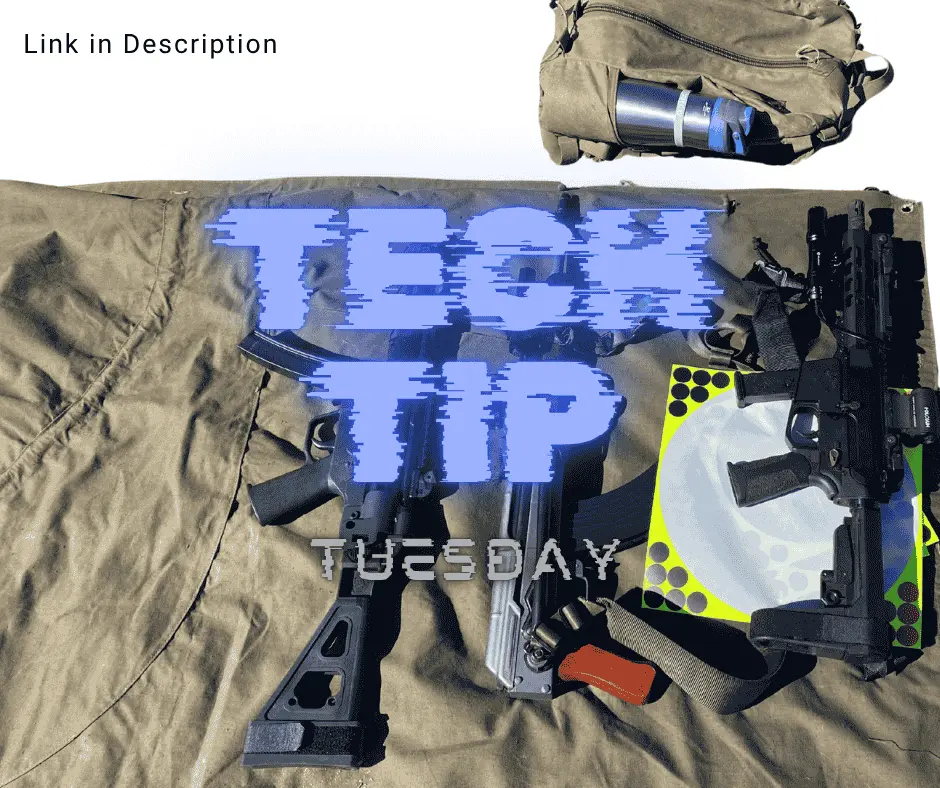Hey there, shooters! Two weeks ago we wrote a Tech Tip about ammunition and I mentioned that I liked to carry ammo that went in around the 17-18 inch mark. A few people wanted to know why so today I want to dive into that specific topic. Now, I know what you might be thinking—17 inches sounds like a lot. But there’s more to this story than meets the eye, and I’m here to break it down for you.

Photo showing testing done by Lucky Gunner on Josh’s preferred 9mm cartridge the Federal HST 124GR 9mm +P
Understanding Ballistic Gelatin
First, let’s talk about ballistic gelatin. This substance is used for testing bullet performance because it closely simulates human tissue. It’s a standardized medium, which means we can compare the performance of different bullets under controlled conditions. But remember, ballistic gelatin is a best-case scenario. It doesn’t account for all the variables we might encounter in a real-world situation—like clothing, bone, and muscle. This is why the FBI requires rounds to penetrate between 17 inches of ballistic gelatin for their ammunition, setting a standard that most law enforcement agencies in the U.S. follow.
The Importance of Penetration
So, why 17 inches? In a perfect world, every shot we fire would stop exactly where it needs to. But we live in the real world, where bullets have to navigate through layers of clothing, muscle, and bone. These obstacles can rapidly slow down and divert bullets, reducing their effectiveness. This is why penetration is crucial. For a bullet to reach and damage critical organs—like the heart or lungs—it needs to penetrate deeply.
The Mechanisms of Stopping Threats
In a lethal encounter, there are two primary ways bullets stop threats: blood loss and traumatic disruption to the central nervous system (CNS). The most common mechanism is blood loss, which takes time to incapacitate an attacker. Therefore, being able to disable an attacker while blood loss occurs is critical. This often involves hitting vital organs or bones. Damaging the heart or lungs can slow down and disable an attacker, while breaking bones can immobilize them entirely creating the time you need for blood loss to eliminate the threat.
To achieve this, bullets need to reach these critical areas while still having enough kinetic energy left to damage them, and that’s where deep penetration comes into play. Hollow points that penetrate 17 inches of ballistic gelatin are more likely to reach and damage these vital structures, even after passing through clothing and other barriers.
Real-World Performance
Let’s take a look at real-world scenarios. In the majority of police shootings, hollow point ammunition rarely exits the body of the person being shot, provided the bullet hits its mark. This is because bone, muscle, and clothing act to rapidly slow down and divert bullets. This reduces the risk of over-penetration—where a bullet passes through the target and continues traveling, potentially causing unintended damage.
As someone who has had real-world experience using firearms in lethal encounters during my time in the military, I can tell you that accuracy and penetration are paramount. My training has always emphasized being aware of what’s behind my target, which minimizes my concerns about over-penetration. Instead, my primary concern is ensuring that my bullets can penetrate deeply enough to neutralize a threat effectively.
The Role of Obesity
There’s another factor we need to consider: obesity. In 2017-2020 the CDC did a survey of obesity in America finding that 41.9% of Americans qualify as obese and that number was rising especially in the wake of COVID. With obesity on the rise in America, there’s more tissue for bullets to penetrate. This makes it even more critical to choose ammunition that can reach vital organs given you have almost 50/50 chance of encountering an assailant in America wrapped in natures blubbery body armor. Bullets that penetrate 17 inches of ballistic gelatin are more likely to be effective against larger attackers, ensuring that the ammunition can still perform its life-saving function for you in a self defense situation.
Conclusion
In summary, carrying hollow points that penetrate 17 inches of ballistic gelatin is not just about ensuring maximum stopping power. It’s about preparing for real-world variables—clothing, bone, muscle, and even the increasing prevalence of obesity. These factors can all impede a bullet’s path, making deep penetration essential for effective self-defense.
My experience as a competitive shooter and my time in the Military has taught me the importance of reliable ammunition that can hit where you need it to hit effectively. When your life is on the line, you need to trust that your bullets will do their job, reaching critical areas to stop a threat quickly and effectively.
We have a saying in the military “The Mission drives Equipment” meaning your end goal should be a significant factor in deciding what you use to achieve that goal. Everyone is going to have different requirements, abilities, and environmental factors to consider when picking both a gun and ammo to carry for self defense. Our goal at TFirearms is to give you the best information and advice to help you find out what your goldilocks gun is.
Stay safe, and keep shooting straight.
Joshua Stevens


